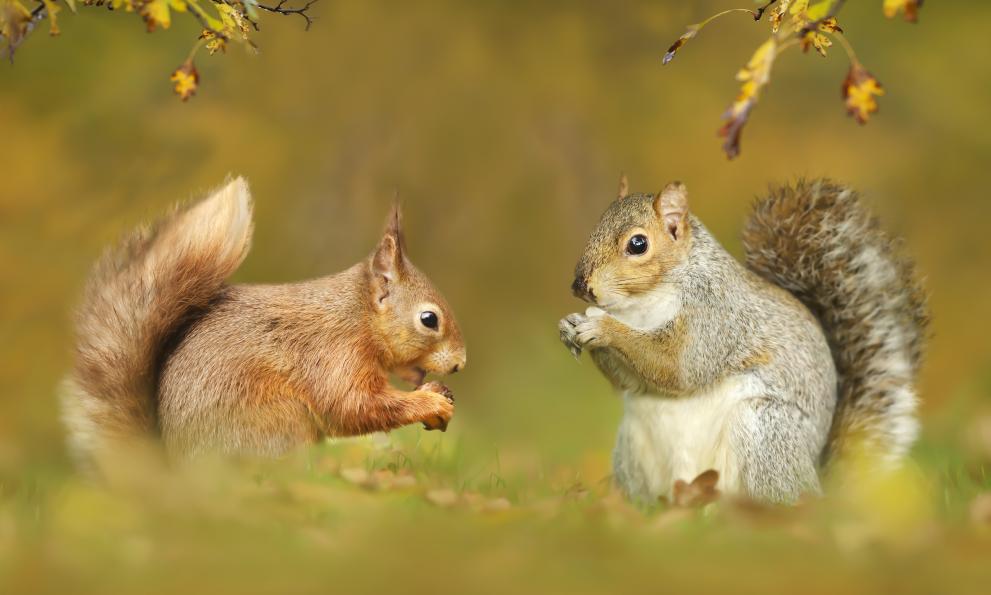
Invasive Alien Species (IAS) are animals or plants introduced accidentally or deliberately into a new environment, where they can cause serious negative impacts to biodiversity. They represent a major threat to native species and ecosystem services in Europe, causing damage worth billions of euros to the European economy every year.
The Joint Research Centre (JRC) established the European Alien Species Information Network (EASIN), which gathers and makes available scientific information and spatial data on IAS occurring in Europe.
EASIN supports the Commission and the Member States (MS) in the implementation of the Regulation (EU) 1143/2014 on the prevention and management of the introduction and spread of IAS (IAS Regulation), and contributes to the research on alien species.
Currently there are 36 plants and 30 animals on the European list of IAS of Union concern, which is regularly updated. EASIN brings together citizens, scientists and policy makers in an effort to monitor alien species and control those that cause damage to native species, habitats, ecosystems and to people’s health.
Citizens can help preventing the introduction or spread of alien species, and support their monitoring, through the “Invasive Alien Species Europe” smartphone App.
The “Invasive Alien Species Europe” smartphone App and training
In the context of EASIN citizen science, citizens can report sightings of Invasive Alien Species through the “Invasive Alien Species in Europe” smartphone App. The procedure entails few simple steps:
- Download the ‘Invasive Alien Species Europe” App (Android, iOS)
- Take a photo of the spotted species from the list of Union concern;
- Fill the form and click Report a sighting to send the observation.
The reported observations are validated by experts of the European Alien Species Information Network (EASIN), integrated and made available through the EASIN species occurrence maps.
The online free training called Have you seen an alien? provides tailored information aiming at i) increasing knowledge and involve the public in the monitoring of IAS in Europe, ii) promoting people’s engagement in IAS management, and iii) supporting the implementation of the IAS Regulation.
The online course can also help teachers who seek expert knowledge on biodiversity and want to give their students the opportunity to experience citizen science activities. The course is free, open and accessible to all stakeholders and people interested in the topic.
What alien species and where are they present in the European Union?
The latest JRC publication on this subject is an analysis of the information reported by EU Member States (required by Article 24 of the IAS Regulation) on the distribution of IAS of Union concern listed by 2017, recorded in their territory until December 2018.
The report provides recommendations to improve IAS monitoring, reporting and data sharing. Most IAS of Union concern addressed in this assessment are present in the EU territory, and several are widely distributed (32 IAS present in more than 5 MS) with higher concentration of species in western EU Member States.
Only five species are not currently present: Corvus splendens (Indian house crow), Microstegium vimineum (Japanese stiltgrass), Parthenium hysterophorus (Whitetop weed), Persicaria perfoliata (Asiatic tearthumb) and Sciurus niger (Fox squirrel).
A JRC baseline analysis of IAS recently added to the EU list, published in April 2021, has revealed that most of the species are already present in Europe’s environments and spread across western EU countries (e.g. IT, FR, PT, ES), while their presence is more limited in eastern MS (e.g. EE, LV, LT).
Several species are already widespread across the EU (e.g. Lepomis gibbosus - Pumpkinseed, Ailanthus altissima - Tree of heaven), while others are still rare (e.g. Andropogon virginicus - Broomsedge bluestem, Arthurdendyus triangulatus - New Zealand flatworm) or not yet in the EU (Lespedeza cuneata - Chinese bushclover, Lygodium japonicum - Vine-like fern, Plotosus lineatus - Striped eel catfish, Cortaderia jubata - Purple pampas grass).
Most of the regulated species originate from East Asia and were primarily introduced in the EU through escapes linked with introduction for ornamental purposes, and the aquarium trade.
Invasive species in European waters
There are currently about 800 marine non-indigenous species (NIS) in the EU national marine waters, several of which have negative impacts on biodiversity and marine ecosystem services.
To address the risks they pose, the Marine Strategy Framework Directive (MSFD) requires EU MS to consider NIS in their marine management strategies. JRC has published a report to help Member States comply with MSFD requirements, providing an assessment of main challenges and practical management solutions.
The report contains a scientific and policy valuable dataset concerning the date of first record of each NIS in each MS and MSFD sub region, the related pathway of introduction for species on NIS baselines (up to 2011), and between 2012 and 2017.
This dataset can support the process towards the establishment of the threshold (limit) values for the descriptor D2C1 (i.e. the number of new introductions of NIS in a 6-year period).
Related Content
Report: Baseline Distribution of Invasive Alien Species of Union Concern
Report: Marine Strategy Framework Directive – Descriptor 2, Non-Indigenous Species
Report: EU Regulation 1143/2014: assessment of invasive alien species of Union concern distribution
Preserving evolutionary heritage: proposal for new conservation strategies
Commission launches knowledge centre to reverse biodiversity loss and protect Europe’s ecosystems
Details
- Publication date
- 19 August 2021
